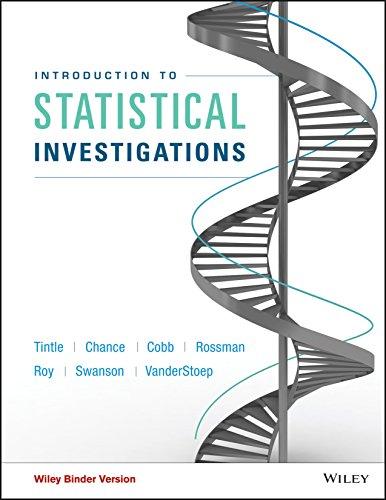A recent study examined hearing loss data for 1,771 U.S. teenagers. In this sample, 333 were found
Question:
A recent study examined hearing loss data for 1,771 U.S. teenagers. In this sample, 333 were found to have some level of hearing loss. News of this study spread quickly, with many news articles blaming the prevalence of hearing losson the higher use of ear buds by teens. At MSNBC.com (8/17/2010), Carla Johnson summarized the study with the headline: “1 in 5 U.S. teens has hearing loss, study says.” To investigate whether this is an appropriate or a misleading headline, you will conduct a test of significance with the following hypotheses:
Null: π = 0.20 Alternative: π ≠ 0.20
a. Describe what the symbol π stands for in this context.
b. Use the Theory-Based Inference applet to determine a p-value.
c. Based on your p-value is there strong evidence that the proportion of all U.S. teens with some hearing loss is different than 1 in 5 (or 20%)?
d. Using the applet, find a 95% confidence interval for the proportion of U.S. teens that have some hearing loss.
e. What is the margin of error for you confidence interval from part (d) of this question?
f. Based on your confidence interval, is 0.20 a plausible value for the proportion of the population that has some hearing loss? Explain why or why not.
g. Based on your p-value, is 0.20 a plausible value for the proportion of the population that has some hearing loss? Explain why or why not.
Step by Step Answer:

Introduction To Statistical Investigations
ISBN: 9781118172148
1st Edition
Authors: Beth L.Chance, George W.Cobb, Allan J.Rossman Nathan Tintle, Todd Swanson Soma Roy





